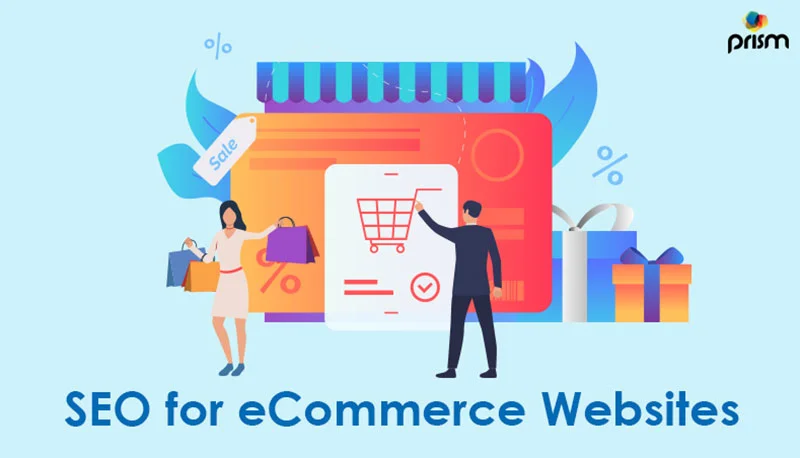

7 Tips to Get Started with The Technical SEO for eCommerce Websites

Table Of Contents
- What is Breadcrumb Navigation and how to use it?
- What are different types of breadcrumbs?
- Why is it important to improve a website’s load time?
- What is the importance of a clean URL structure?
- How to use structured data?
- Why website security is the key for eCommerce sites?
- How to secure your website?
- What is an XML sitemap?
- What is a Txt file?
- Why eCommerce websites should use canonical tags?
1. Use Breadcrumb Navigation
It is a secondary navigation scheme used to reveal the user’s location in a website or web application. To facilitate the users, it traces the path back to the landing page. It prevents the user from getting lost and is mostly found in websites with large content with multiple pages which needs grouping and logical categorizing.
Types of breadcrumbs
There are three types of breadcrumbs depending on their purpose. They are:
Location-based
These are used for navigation schemes that have multiple levels and are used to show the user where they are in the website's hierarchy.
Attribute-based
These trails display the attributes of a particular page
Path-based
These trails are used to trace the steps taken by the user to arrive at a particular page
Breadcrumb navigation is used to provide convenience for users, to reduce the click or actions to return to the higher-level pages and to reduce the bounce rates. It provides an organized path for getting products on your website. It really elevates the experience for the users.
2. Improve Site Load Time
Site load time is a primal factor in deciding if the viewer is going to visit your website again or not. A survey shows that 53% of the users will not revisit your website if it takes more than 3 seconds to load. Annually, 2.6 billion dollars are lost in revenue due to the slow loading of the website.
You can check your current site loading time by using Google Page Speed Insights and if it is more than 3 seconds, you can remedy that by reducing redirects, reducing image file size, minifying HTML, CSS, and JavaScript., enabling browser caching, and by hosting videos on external platforms. By doing any of this, you will be improving your site’s backend ultimately leading to a better experience for shoppers.
3. Have a clean URL structure
A clean URL structure is a sign of good technical SEO. Having a clean URL means having one with a logical navigation path without any random numbers and letters. When you have a clean URL, it shows the path or the website where you are on the website. Therefore, URL optimization is really important as it provides you with an opportunity to integrate your keywords in the URL which ultimately helps you rank in relevant search results.
4. Use structured data
It is the data located in a fixed field of record or file. Structured data provides explicit clues or additional information about a page's content and Google uses this structured data in forming snippets and data labels that appear on the page's HTML code.
Structured data provides you immediate and easy-to-follow information about your page hence elevate the SEO rankings of the website. It is a must when you want to do technical SEO for eCommerce. You can add information like product name, rating, price, and availability of the item that adds to the overall experience of the user.
In addition to that, it also serves as an indication that your page is a product page and helps to increase the traffic on the website. You can use the content writing services offered by the social media marketing agencies present in your vicinity.
5. Make sure your site is secure
When you are running an eCommerce page, you need to make sure that your site is secure because when the users are purchasing products, they provide your site with sensitive personal information and when they submit it, they submit it with the belief that the website is going to respect its privacy and is going to keep all its information private.
How can you secure your website?
You can secure your website through a Secure Sockets Layer certificate. This certificate ensures the encryption and protection of all the sensitive data of clients. The "HTTPS" present in your address indicates the secure certification of the website.
6. Implementing an XML sitemap and robots.txt file
When you start learning about technical SEO, there are two factors or elements that hold great importance i.e., XML sitemaps and txt file.
XML sitemap
It is used for listing the URLs for a website. It informs the SE about the URLs that are available for crawling. It is done through a web crawler. Also known as spider bot, it is used for web indexing. It provides the map for how search engines should navigate your site.
Txt file
The robot.txt files tell search engine crawlers that which pages or files crawler can request from your site and which pages you can not. This helps prevent the site from overloading with requests. It does not completely block the bots from crawling but slows them down to prevent overloading.
These two components are vital as they are the deciding factor for how Google is going to see your website, which pages is it going to access and analyze first. It is a very crucial part of technical SEO.
7. Use canonical tags
Canonical means “preferred”. It is the HTML element that helps the professionals in preventing duplicate content issues in SEO. Normally what happens is that when you create a webpage, multiple URLs are formed automatically for several reasons. In a situation like this, you need to determine the original source for documents so that all the traffic can be redirected to the main page and can be ranked fairly.
Over time, you might add and delete pages on your website. Sometimes the search engines detect them as separate pages hence leading to content duplication. This content duplication causes problems while ranking on search engines. Once you put a canonical tag on the source website, it is regarded as the canonical or preferred website and is treated as such while ranking for search pages.
Choosing a page as the main website is crucial. A few places where you need canonical tags for your eCommerce site are as such:
Product options
When you have products with different sizes and colors, individual page URLs are created for each of the different products. It becomes mandatory for you to create a canonical tag so that you can guide search engines to the primary product listings.
Products or multiple pages
If you have a product listed in multiple categories on a website, you will have to implement the canonical tag to determine or highlight the main page for the product for SEO evaluations and rankings.
Index pages
If you have a product category that stretched to more than one page, you need to establish the main page by using the canonical tag so that the search engines and the users don’t get confused.
Technical SEO holds great importance in the digital marketing world and to master it, one needs to acquire knowledge about coding and optimizing the backend of your website. You can not just master it in a few days or sessions. If you are not confident about your skills, you can always reach out for help from the experts.
This is it for today’s blog. Hopefully, these seven tips will help you manage and understand the basics of technical SEO. Do share your feedback and if you have any comments or queries, write to me and I will get back to you as soon as possible. Thank you.

About The Author: Lovetto Nazareth
Lovetto Nazareth is a digital marketing consultant and agency owner of Prism Digital. He has been in the advertising and digital marketing business for the last 2 decades and has managed thousands of campaigns and generated millions of dollars of new leads. He is an avid adventure sports enthusiast and a singer-songwriter. Follow him on social media on @Lovetto Nazareth
Post Your Comment!
Recent Blogs
Abu Dhabi: A Thriving Hub for brand logo design
Human-Designed Logo Still takes the cake… at least in the Dubai Market
Guide to Grow Business in Abu Dhabi: Top Advertising Agency in UAE
Digital Dominance Why do you need a Top Web Development Agency in Dubai?

Support
Phone: +971 55 850 0095
Email: sales@prism-me.com
Location: Prism Digital Marketing Management LLC Latifa Tower, Office No. 604 - West Wing World Trade Center 1, Sheikh Zayed Road Dubai, UAE
Subscribe
Join our newsletter to stay up to date on features and releases.
By subscribing you agree to our Privacy Policy and provide consent to receive updates from our company.
